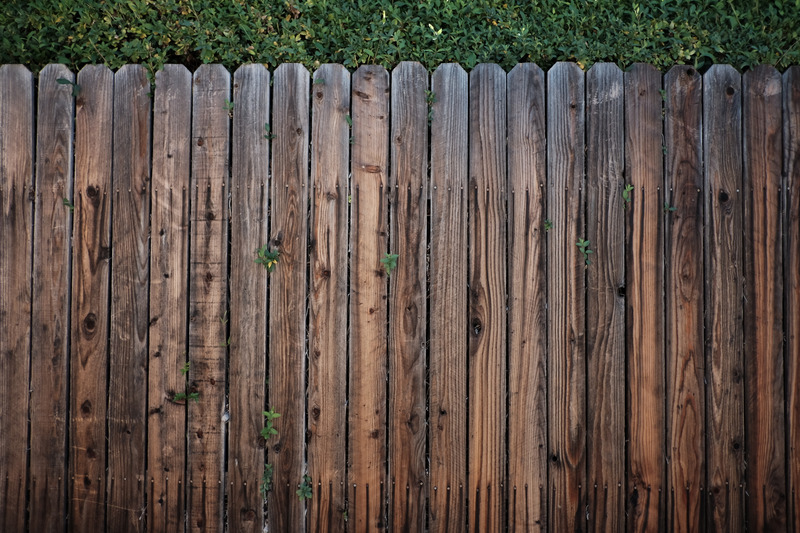Home Improvement Projects

If you want some home improvement projects to do during summer we have few ideas jotted down in this article. This article is an excerpt from the book called “California Home Landscaping” by “Roger Holmes & Lance Walheim” Fences, Arbors, and Trellises Novices who have no trouble tackling a simple flagstone path often get nervous when it comes time to erect a fence, an arbor, or even a trellis. While such projects can require more skill and resources than others in the landscape, the ones in this book have been designed with less-than-confident do-it-yourself builders in mind. The designs are simple, the materials are readily available, and the tools and skills will be familiar to anyone accustomed to ordinary home maintenance. First, we’ll introduce you to the materials and tools needed for the projects. Then we’ll present the small number of basic operations you’ll employ when building them. Finally, we’ll provide drawings and comments on each of the projects. Materials Of the materials offering strength, durability, and attractiveness in outdoor settings, wood is the easiest to work and affords the quickest results. While almost all commercially available lumber is strong enough for landscape structures, most types decay quickly when in prolonged contact with soil and water. Cedar and redwood, however, contain natural preservatives and are excellent for landscape use. Alternatively, a range of softwoods (such as pine, fir, and hemlock) are pressure-treated with preservatives and will last for many years. Parts of structures that do not come in contact with soil or are not continually wet can be made of ordinary construction-grade lumber, but unless they’re regularly painted, they will not last as long as treated or naturally decay-resistant material. In addition to dimension lumber, landscape structures often incorporate lattice, which is thin wooden strips crisscrossed to form patterns of diamonds of squares. Pre-made lattice is widely available in sheets 4 ft .by 8 ft. and smaller. Lattice comes in decay-resistant woods as well as in treated and untreated softwoods. The strips are typically from 1/8 to 3/8 in. thick and about 11/2 in. wide, overlapped to form squares ranging from 1 to 3 in. or more on aside. Local supplies vary, and you may find lattice made of thicker or narrower material. Lattice can be tricky to cut; if you’re uneasy about this task, many suppliers will cut it for you for a small fee. Fasteners For millennia, even basic structures such as these would have been assembled with complicated joints, the cutting and fitting of which required long training to master. Today, with simple nailed, bolted, or screwed joints, a few hours’ practices swinging a hammer or wielding a cordless electric screwdriver is all the training necessary. All these structures can be assembled entirely with nails. But screws are stronger and, if you have a cordless screwdriver, make assembly easier. Buy common or box nails (both have flat heads) hot-dipped galvanized to prevent rust. Self-tapping screws (“deck” screws) require no pilot holes. For rust resistance, buy galvanized screws or screws treated with zinc dichromate. Galvanized metal connectors are available to reinforce the joint used in these projects. For novice builders, connectors are a great help in aligning parts and making assembly easier. (Correctly fastened with nails or screws, the joints are strong enough without connectors.) Finishes Cedar and redwood are handsome when left unfinished to weather, when treated with clear or colored stains, or when painted. Pressure-treated lumber is best painted or stained to mask the greenish cast of the preservatives; weathered it turns a rather unattractive gray-green. Outdoor stains are becoming increasingly popular. Clear or lightly tinted stains can preserve or enhance the rich reddish browns of cedar and redwood. Stains also come in a range of colors that can be used like paint. Because they penetrate the wood rather than forming a film, stains don’t form an opaque surface-you’ll still need paint to make a picket fence white. On the other hand, stains won’t peel or chip like paint and are therefore easier to touch up and refinish. When choosing a finish, take account of what plants are growing on or near the structure. It’s a lot of work to remove yards of vines from a trellis or squeeze between a large shrub and a fence to repaint; consider an unfinished decay-resistant wood or an initial stain that you allow to weather. Tools Even the least-handy homeowner is likely to have most of the tools needed for these projects: claw hammer, crosscut handsaw, brace-and –bit or electric drill, adjustable wrench, combination square, tape measure, carpenter’s level, and sawhorses. You may even have Grandpa’s old posthole digger. Many will have a handheld power circular saw, which makes faster (though noisier) work of cutting parts to length. A cordless drill/ screwdriver is invaluable if you’re substituting screws for nails. If you have more than a few holes to dig, consider renting a gas-powered posthole digger. A 12-in-diameter hole will serve for 4×4 posts; if possible, get a larger-diameter digger for 6×6 posts. Setting Posts Most of the projects are anchored by firmly set, vertical posts. In general, the taller the structure, the deeper the post should be set. Arbor posts should be at least 3 ft. deep. Corner and end posts of fences up to 6 ft. tall and posts supporting gates should also be 3 ft. deep. Intermediate fence posts can be set 2 ft. deep. The length of the posts you buy depends, of course, on the depth at which they are the seat and their finished heights. When calculating lengths of arbor posts, remember that the tops of the posts must be level. The easiest method of achieving this is to cut the posts to length after installation. For example, buy 12-ft. posts for an arbor finishing at 8 ft. above grade and set 3 ft. in the ground. The convenience is worth the expense of the foot or so you cut off. The site and personal preference can determine whether you cut fence
How Much Does A pre drywall inspection cost

How Much Does A Pre-Drywall Inspection Cost? Important Things to Know Before Going For Pre-Dywall Inspection There are many details to be considered throughout the construction process. In addition to the various rules and regulations that preside over construction in your local area, there are other details like the pre drywall inspection to consider as well. All in all, dealing with the repair hole in drywall construction project can be a frustrating ordeal. The best way to avoid the frustration of this project is to remain as informed as possible. Arming yourself with all the information about your projects is the best way to avoid unpleasant surprises that tend to crop up along the way. To this end, we have compiled a short compendium of information, so that you can know exactly what to expect and make sure that nothing is overlooked. An inspection of the major systems of your home at the pre drywall stage includes: Structural framingFoundationRoofExterior grade,Electrical layoutPlumbingThe time it takes to complete this inspection can range from 1 to hours and depends on the size of the property being inspected as well as any specific issues the client is interested in. Any specific issues may require additional pictures and documentation, as we will see in the article below. Complete peace of mind … from $100 to $250! Of course, this is not a required part of the project. Nevertheless, there are plenty of reasons that it would be a good idea for you to invest in this inspection. You will be provided with a detailed report on all the issues your project manager finds in their inspection. This saves you from having to do this important inspection yourself and provides a professional perspective that most of the population simply lacks. Most often these inspections are concluded with a report that declares the complete absence of anomalies. But when an issue is found, it is never a small issue. I have seen potential drainage issues, joists that have been accidentally cut, and many other issues that can be expected to cause considerable issues further down the line. Furthermore, if your inspector does uncover an issue, sometimes it is an issue that is already being fixed and can therefore fall into your new home warranty. Documents The first and most important part of the inspection will be plenty of photos and footage. Think about all the issues that can be solved by a clear picture of what is happening behind the scenes in your own house. Will you want to hang wall art in the future? Then you will want to know what is behind the wall you plan on hanging your art. You will probably want to do some renovations at some point, you will be very happy to have this clear documentation and photo evidence of what you can expect to find hidden in the walls. I would recommend going all out and having a 3D Matterport model of your home created as well. This will allow you to spend more time on the inspection itself and less time on taking the picture and making videos. Furthermore, the 3D rendering of your home will make it far easier to plan future projects than thumbing through 1000+ pictures and 2 hours of video footage. Finally, many people love to share these 3d models with friends and family so everyone can see how things are progressing in your home. In the Pre Drywall Walk, you and your construction manager will tour the grounds of your home. This is to get acquainted with the plumbing, electrical wiring, internal systems, and any other systems or upgrades you have selected at the time you signed the building contract or have petitioned since then. Best Tips for Your Pre-Drywall Walk If you are having your home built, the best time to conduct this important pre drywall inspection is right before the dry walls go up. This way the power outlets, framing, electrical wiring, HVAC, A/V lines, and all other installations and upgrades you have selected will be installed at this point. The more questions you ask, the better! When you buy a home on resale, there is very little that you know about the construction stage of the home. As a responsible homebuyer, you already had the inspector inspect the home pre-closing, but these inspectors are limited to the things they can see. Inspectors are not there to poke holes in the walls and explore anything beyond what is readily visible. Now compare this to building a new home. Regardless of how professional the builder of the home was, there is still much to learn about what is inside your new home. This walk is your chance to get a crash course on home construction. I have attended a good many pre drywall inspections and have been utterly amazed by what I have found within. There is always much to learn about plumbing cleanouts, ductwork, air registers, flashing, electrical panels, and more. Check Your HVAC Units HVAC Units — are perhaps one of the most important functional aspects of keeping the home comfortable on the inside. Because the HVAC plays such an important role in keeping the air temperature and quality of the home on point, the HVAC and the entire ducts system are worth inspecting completely. There are several important issues you will want to keep an eye out for. Including: Gas pipe leaks Too many units near each other AC inconsistent in various parts of the home Vents not completely sealed into the walls or cabinets Venting angled incorrectly or blocked Insulation issues What this means is that performing a thorough inspection of the home’s HVAC units and the system will ensure a safer home and more comfortable home life. Plumbing System Another very important part of your drywall inspection is the plumbing system. While it doesn’t always get the praise and consideration it is due, the entire operations of the home will be brought to a
